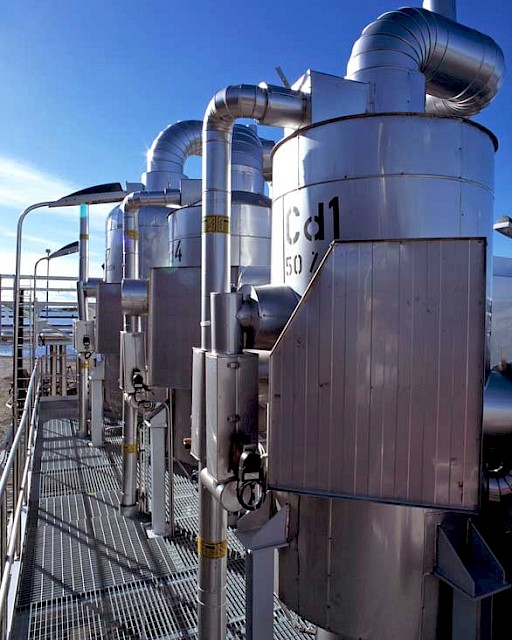Comprehensive Atmospheric Monitoring Programme (CAMP)

The Comprehensive Atmospheric Monitoring Programme (CAMP) aims to assess the input of selected contaminants and nutrients to the OSPAR maritime area and its regions via atmospheric deposition. This is based on annual monitoring and reporting of concentrations of mandatory and voluntary components in precipitation and air. Under the CAMP, OSPAR Contracting Parties are committed to monitoring, on a mandatory basis, the concentrations of a range of metals, organic compounds and nutrients in precipitation and air. The CAMP also encourages OSPAR Contracting Parties to monitor, on a voluntary basis, additional compounds such as certain persistent organic pollutants.
Mandatory | Voluntary | |
Precipitation | Heavy metals: cadmium (Cd), lead (Pb), mercury (Hg), nickel (Ni) Nutrients: ammonium (NH4+), nitrate (NO3-) | arsenic (As), chromium (Cr), copper (Cu), zinc (Zn) Polycyclic aromatic hydrocarbons (PAHs) (For quality control: pH, Na+, K+, Ca2+, Mg2+, SO42-, Cl-) |
Airborne | Nitrogen species: nitrite (NO2), nitric acid (HNO3), ammonia (NH3), ammonium (NH4+), nitrate (NO3- ) Heavy metals: cadmium (Cd), lead (Pb), nickel (Ni) | Heavy metal: mercury (Hg(g)) Polychlorinated biphenyls (PCBs) |
The detailed commitments of Contracting Parties on atmospheric monitoring are set out in the Guidance for the Comprehensive Atmospheric Monitoring Programme (CAMP) (Agreement 2015-04). The CAMP measurements are submitted and made publicly available at the international database EBAS (Database for Atmospheric Composition Research), hosted at the Norwegian Institute for Air Research: http://ebas.nilu.no/. Information on the monitoring stations can be found at http://www.nilu.no/projects/ccc/sitedescriptions/.
Monitoring by Contracting Parties under CAMP is coordinated through adherence to jointly agreed monitoring guidance:
- CEMP guidelines for coordinated monitoring for eutrophication, CAMP and RID;
- JAMP Guidelines for the sampling and analysis of mercury in air and precipitation;
- JAMP Guidelines on the measurement of atmospheric inputs of PAHs;
- Guidance note on the sampling and analysis of PCBs in air and precipitation.
The data annually reported under the CAMP are assessed and published by OSPAR in annual reports. Monitoring and assessment under CAMP is complemented through OSPAR’s cooperation with the Convention on Long-range Transboundary Air Pollution’s Cooperative programme for monitoring and evaluation of the long range transmission of air pollutants in Europe (EMEP). For example, the OSPAR recommendation for field and laboratory methods and the sampling frequency is to follow the EMEP guidelines. OSPAR uses EMEP’s modelled products for atmospheric deposition of selected contaminants. Recent EMEP reports are available:
- Atmospheric Deposition of Nitrogen to the OSPAR Maritime Area in the period 1995-2017
- Reduction of Atmospheric Nitrogen Deposition to OSPAR Convention Waters Achievable by Implementing Gothenburg Protocol/EU-NEC Directive
- Atmospheric Deposition of Nitrogen to the OSPAR Maritime Area in the period 1995-2014.

